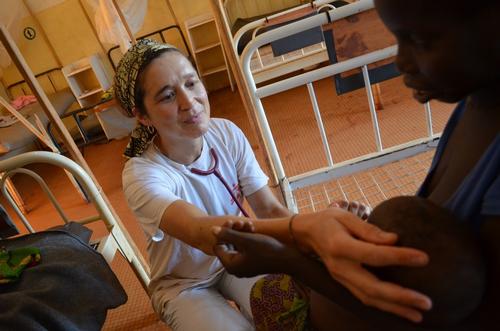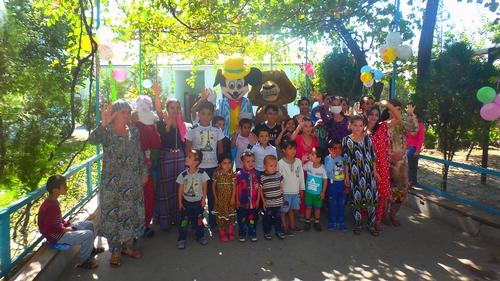Leonardo Palumbo is a Regional Advocacy Manager for Médecins Sans Frontières (MSF). He supports MSF teams in Central Asia with medical advocacy and brings the latest evidence on tuberculosis and HIV into the policy-making process.
Leonardo Palumbo is a Regional Advocacy Manager for Médecins Sans Frontières (MSF). He supports MSF teams in Central Asia with medical advocacy and brings the latest evidence on tuberculosis and HIV into the policy-making process.
Recent treatment regimens for drug-resistant tuberculosis (DR-TB) have resulted in patients enduring a gruelling two-year treatment journey, which necessitates taking up to 20 tablets every day with months of daily painful injections. The side-effects associated with the treatment results in many suffering from permanent hearing loss and some developing suicidal depression and psychosis. For those able to tolerate this miserable treatment, only around half of those suffering with multi-drug resistant tuberculosis (MDR-TB), and one quarter suffering with extensively drug resistant TB (XDR-TB) will be cured.
Thankfully, in today’s update of their TB guidelines, the World Health Organization (WHO) has endorsed a regimen which offers a beacon of hope to those fighting MDR-TB. For eligible adults and children, this alternative means a more tolerable, shorter regimen with better prospects of success. Shorter treatment durations will also allow national TB programs to broaden access to more effective treatment, hopefully reducing the current high rates of treatment intolerance, and resulting in positive effects on disease transmission.
While the new recommendations give high burden MDR-TB countries another tool to help them reach the ambitious goals set out in the WHO End TB strategy, this can only be seen as a highly significant first step. Implementation of these new strategies through national guideline updates, training of healthcare personnel and drug procurement must now proceed with high priority. Governments must demand development of child-friendly formulations of the second-line drugs included in these new treatment recommendations, while the supply of key agents such as clofazimine must be ensured.
Implementation of the short-regimen has already occurred in some countries where MSF, the Union and the Damien Foundation have partnered with ministries of health to promote broader access and increased knowledge. While the short-regimen is not the fully oral pan-resistance treatment we need for all DR-TB patients, its simplified approach has allowed access to curative treatment for those living in unstable settings such as the Central African Republic, South Sudan and DR Congo. Additionally, in countries where further resistance affords additional complexity to the DR-TB epidemic, successful implementation of the short-regimen alongside treatment options, including new drugs in Uzbekistan, serves as a positive example of what can be achieved. Finally, successful management of HIV-DR-TB co-infected patients in Swaziland is helping to establish a patient-centred model of care which may be applicable in similar settings.
Sadly, the short-regimen will not be appropriate for those with additional second line drug-resistance. Access to the newer TB drugs, bedaquiline and delamanid, will be essential to offering them a reasonable possibility of cure. Parallel work must be done to ensure these new drugs can be provided to patients through national registration or importation waivers and that international guidelines are updated as more data becomes available to guide dosing in children. More than three years after the WHO interim guidance for bedaquiline was released, the fact that only 2% of the estimated 150,000 eligible patients have received these new drugs, highlights the work that remains to be done.
The recommendations within the new WHO TB guidelines represent an opportunity for countries to implement shorter more tolerable treatment regimens for children and adults. Undoubtedly, their application will broaden availability of treatment to people who are diagnosed with MDR-TB, and hopefully will allow national TB programmes to make early progress towards the goal of ending the TB epidemic by 2035, as set out in the End TB strategy. While further validation of these hopes is needed, this must not serve as a barrier to grasping the opportunity for significant positive change being offered by the WHO.





